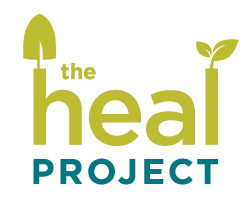Food for Our Children
By Joe Fullerton
Since the outbreak of a novel coronavirus, it’s been hard to look beyond the immediate need to flatten the curve of the pandemic. The global response has been swift and, largely, sincere. As a society we’ve looked at every element of our lives anew—keeping social distance, shopping only for essentials and doing nearly everything remotely. Among the many significant changes has been the closure of schools. This is a wise and necessary step in terms of immediate public health; however, schools regularly serve food to millions of students who are otherwise more likely to go hungry or malnourished.
The National School Lunch Program and the School Breakfast Program feed over 30 million students across the US each day and provide over 5.1 billion meals annually—most at reduced or no cost. Food programs at schools are shown to improve the outcomes of students both in and out of the classroom. The Center for Disease Control and Prevention highlights, among other evidence, that:
Student participation in the United States Department of Agriculture (USDA) School Breakfast Program (SBP) is associated with increased academic grades and standardized test scores, reduced absenteeism, and improved cognitive performance.
Deficits of specific nutrients (i.e., vitamins A, B6, B12, C, folate, iron, zinc, and calcium) are associated with lower grades and higher rates of absenteeism and tardiness among students.
Calories alone will not result in better scores, though. Nutrient rich diets and balanced meals are really what make the difference. Researchers at UC Berkeley and the University of Montana found that the “relationship between healthier school meals and test scores is due to the nutritional quality of the meals rather than the quantity of calories consumed.”*
School breakfasts and lunches help kids to show up, retain and recall information and behave. But these services are less frequent and, for some, less accessible while school is out of session. Cabrillo Unified School District is providing breakfast and lunch pickup for a few days per week during the closure:
El Granada & Hatch: Monday and Wednesday 11:30am to 12:30pm
Moonridge: Friday Breakfast and lunch for 1 day
Second Harvest grocery supplements: El Granada & Hatch 11:00am to 1:00pm
Even without COVID-19, access to food raises a range of issues to even the most diverse and healthy community. But the impact is certainly greatest in marginalized and minoritized communities. Research shows a direct and persistent link between food insecurity and gender, racial and ethnic health disparities. According to Children’s Health Watch:
In 2016, more than 31% of female-headed households reported household food insecurity. This is more than twice the rate for all households (12%). Inequality also clearly plays a role in the rate of food insecurity by race and ethnicity: over 20% of African American or Black households and 19% of Latinx households reported food insecurity, compared to 10% of white households. Additionally, households with children under age 6 also had significantly higher rates of food insecurity compared to all US households (16.6%).
The demographic makeup of the 39% who are eligible for free or reduced meals at school in Cabrillo Unified School District is not readily available, but it’s safe to assume that those who were at risk before the pandemic are even more vulnerable now. To address this, State Superintendent Tony Thurmond announced the launch of the “Cal Meals for Kids” app. The app is available for free download through Apple’s, Google’s and Microsoft’s app stores. Another available resource is: www.nokidhungry.org. Additionally, private citizens and organizations like Second Harvest Food Bank are stepping in to fill the gap and feed those in need. Even with social distancing as the social norm, the COVID-19 response is bringing our community closer together in many ways. For instance, farmers are banding together to help out with programs like Veggielution in San Jose that distribute fresh produce.
Looking beyond the pandemic is daunting. Social isolation, ongoing supply chain concerns and myriad economic and social impacts are part of our foreseeable normal. Just imagine all these concerns being outweighed by not knowing when and where you might eat again. While we may feel powerless in many ways, there are immediate and direct things that we can each do to help make sure those that need food, particularly our students, get it.
*Source: School meal quality and academic performance Anderson, Michael L ; Gallagher, Justin ; Ramirez Ritchie, Elizabeth Journal of Public Economics, December 2018, Vol.168, pp.81-93
—
Joe Fullerton is a sustainability expert with nearly two decades of experience influencing and instigating positive changes at scale. His recent professional focus has been on high-quality, accessible education as the Energy and Sustainability Manager for San Mateo County Community College District and as communications faculty in Arizona State University’s Master of Sustainability Leadership program. Joe also serves as a citizen advisor for Peninsula Clean Energy and is dedicated to supporting local sustainable food system non-profits. He lives in Half Moon Bay with his wife and young son.
